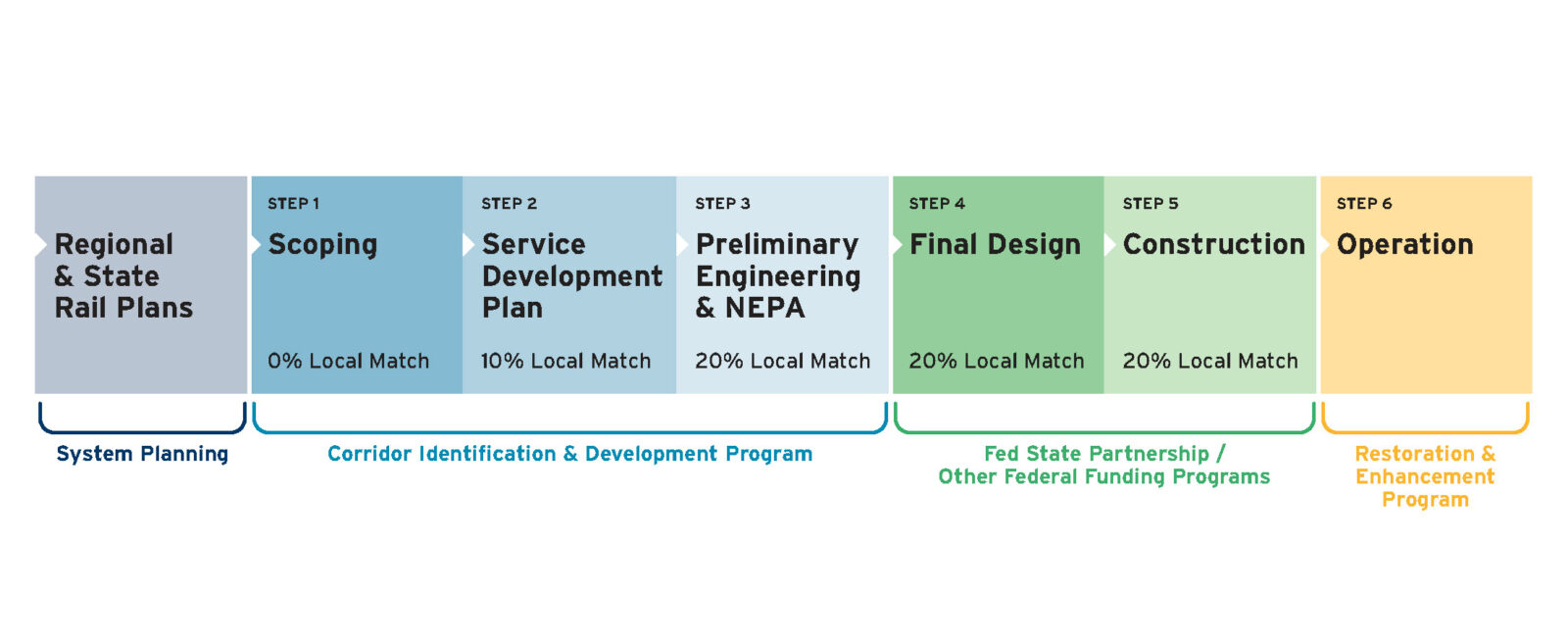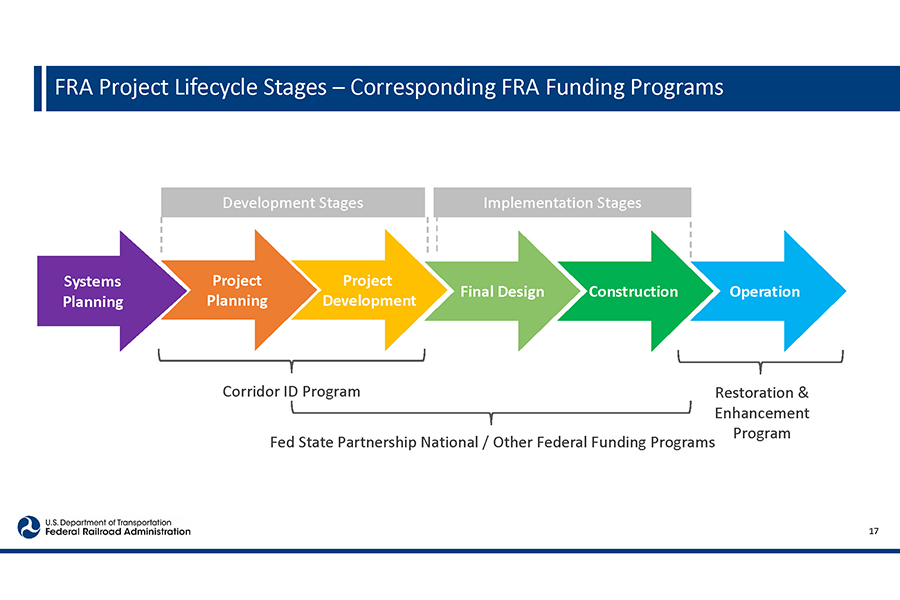Issue in Brief
The Corridor ID Program is a great new tool
The new Corridor Identification Program is managed by the Federal Railroad Administration (FRA). It will be the pathway to federal financial support and technical assistance for new or improved intercity passenger rail routes across the country.
Corridor ID offers a low risk way for local governments and states to start planning for fast, frequent, and affordable trains as states develop their rail programs.
Why Corridor ID is important
Corridor ID is the tool that the FRA will use to prioritize how federal intercity passenger rail funds are spent. The project pipeline will help Congress to decide how much funding to give intercity passenger rail.
Big-picture, Corridor ID accomplishes three crucial things:
- Creates a process for agencies to apply for and be awarded federal grants for planning railroad projects.
- Gives relevant agencies and Congress a tool to evaluate the priority and overall value of proposed projects.
- Builds a foundation for the Federal Railroad Administration to plan a national network of fast, frequent, and affordable trains. As the FRA notes, Corridor ID is a comprehensive planning and development program “that will help guide intercity passenger rail development throughout the country and create a pipeline of . . . projects ready for implementation.”
Steps in the Corridor ID process
The process is broken into three steps. The first step comes at no cost to the project sponsor, so it is a low-risk way to better understand the costs and benefits of the corridor. The sponsor is not obligated to move into the following steps.
Step 1
Creating the scope, schedule, and cost estimate for preparing a Service Development Plan.
Award amount: $500,000
Local share: 0%
Step 2
Develop the Service Development Plan
Award amount: TBD
Local share: 10%
Step 3
Final design and environmental review
Award amount: TBD
Local share: 20%
How Corridor ID relates to other federal programs
Corridor ID helps project sponsors, like a state or a metropolitan planning organization, make their project ready for other federal funding programs. The biggest funding program is the Federal-State Partnership for Intercity Passenger Rail.

Goals of the Corridor ID Program
- Support a sustained long-term development effort.
- Create a capital project pipeline ready for federal (and other) funding.
- Become the primary means for directing federal financial support and technical assistance for new or improved intercity passenger rail services throughout the United States.
Eligible applicants
- Amtrak
- States
- Groups of states
- Entities implementing interstate compacts
- Regional passenger rail authorities
- Regional planning organizations
- Political subdivisions of a state
- Federally recognized Indian Tribes
Eligible corridors
- New routes under 750 miles (except commuter rail)
- Existing routes under 750 miles (except commuter rail)
- Existing inter-regional (long-distance) routes
- Inter-regional routes discontinued by Amtrak
- Inter-regional routes operating on April 30, 1971
What you can do
Make sure that your local leaders know that they can use the Corridor ID program to build the case for trains to their town.

Take Action
The country needs an Interstate Railway Program, like the Interstate Highway Program, to take full advantage of the community, economic, and environmental benefits of trains.
Please join with us in asking Congress to create a national railway program to re-connect America with fast, frequent, and affordable trains.

